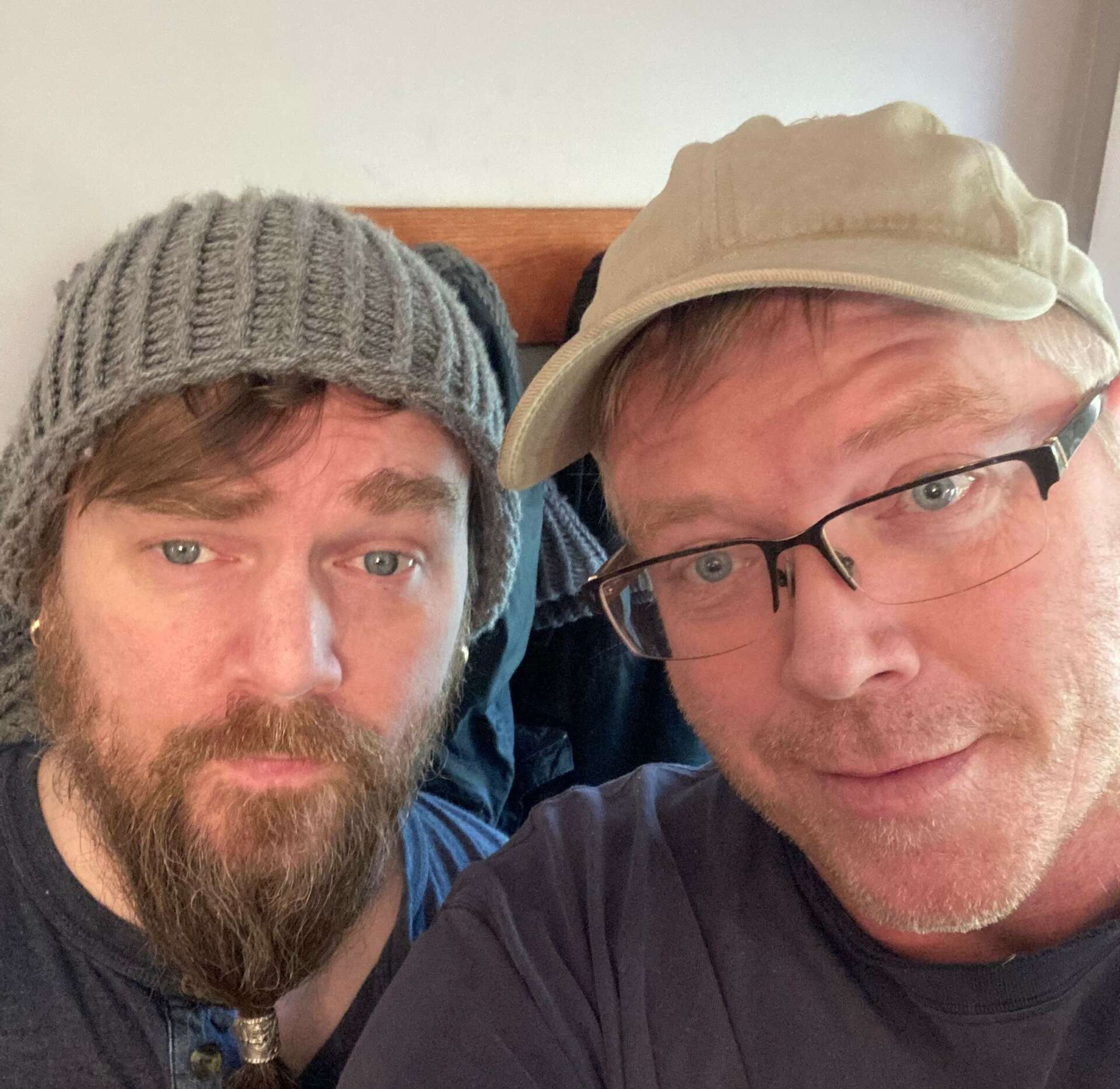We were lucky to catch up with Russ Hapke Dan Wolters recently and have shared our conversation below.
Russ Hapke, looking forward to hearing all of your stories today. We’d love to hear about a project that you’ve worked on that’s meant a lot to you.
For us, one of the more original (at least in our minds) ideas was the beginning of our microbust series. We love tabletop figurines, but theatre of the mind always takes precedence over a miniature frozen in a pose that would be tumbled or set on its side to emulate an action. We thought we would rather start seeing busts at the table that would be slightly larger, and be given a lot more character; not only by our sculpt, but in the end result of a player painting the bust how they pictured their character. The bases are still a 1” base as per the norm, it’s just that by having a bust, the character can be customized to a greater level. It can still be set on its side, or posed in a direction, but the larger busts you can see a lot more detail than in the full body miniatures.
Our customers appreciate the hand sculpted originals as well. When we’re at a festival, or talking with new customers at conventions, they see we are hand sculpting the figures and creating the new pieces as they chat with us. The excitement shown by our customers towards the work has definitely boosted our desire to continue creating this series. Our microbusts have become collection objects, which is incredibly exciting. Originally designed for tabletop gaming, our customers tell us how they use them for other things, displays, for chess, checkers, and one customer reported using these busts when they play games like Monopoly…not everyone wants to be the shoe. Perhaps most meaningful to us about this series is that it can be ever evolving: new creatures, new faces, new techniques.
![]()
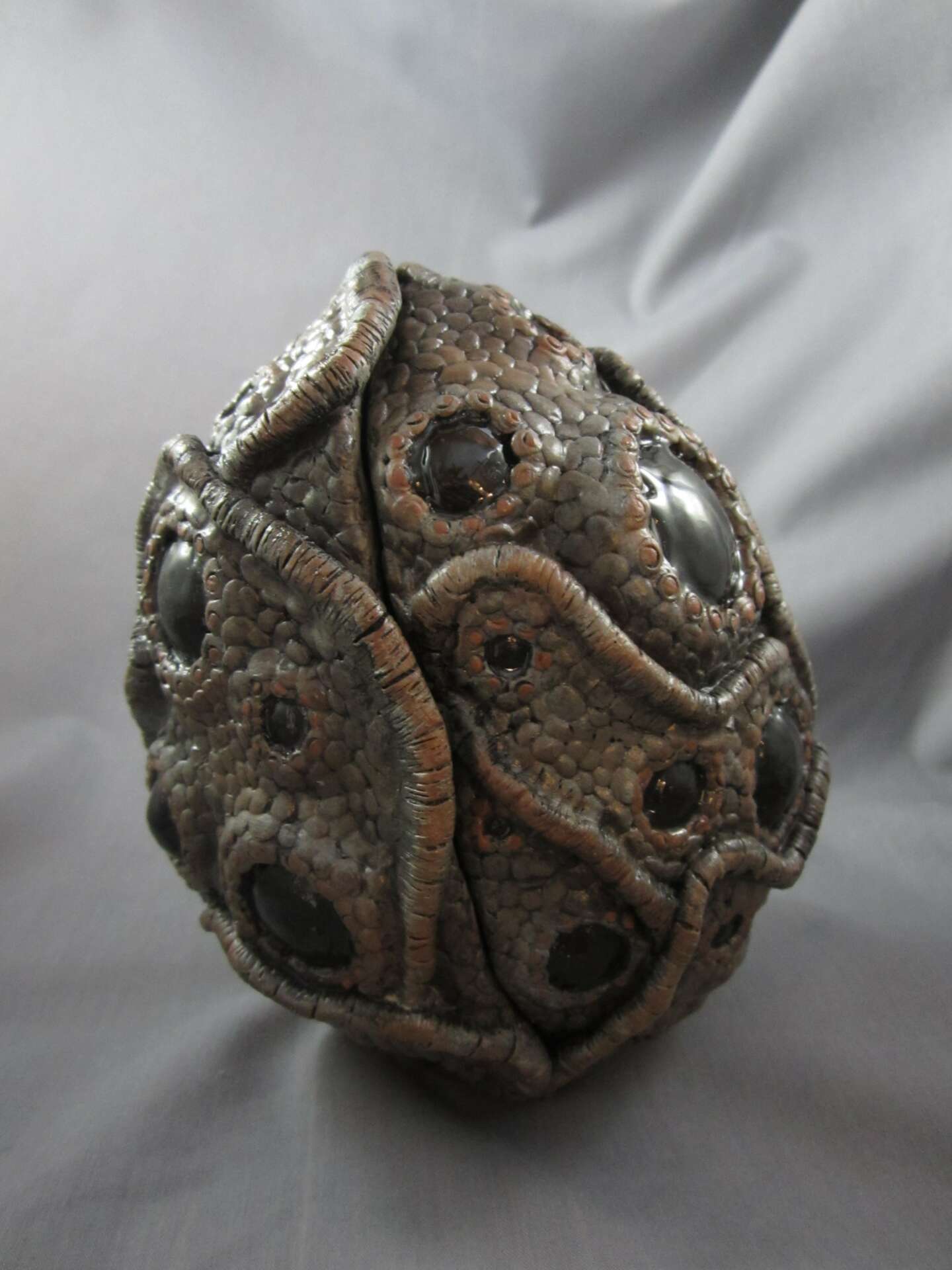
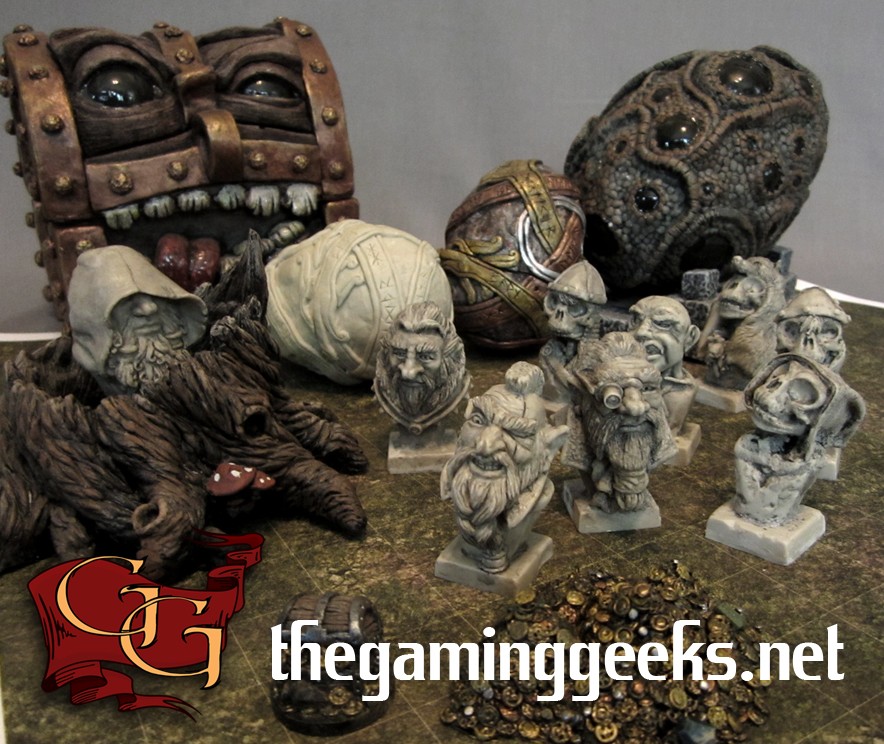
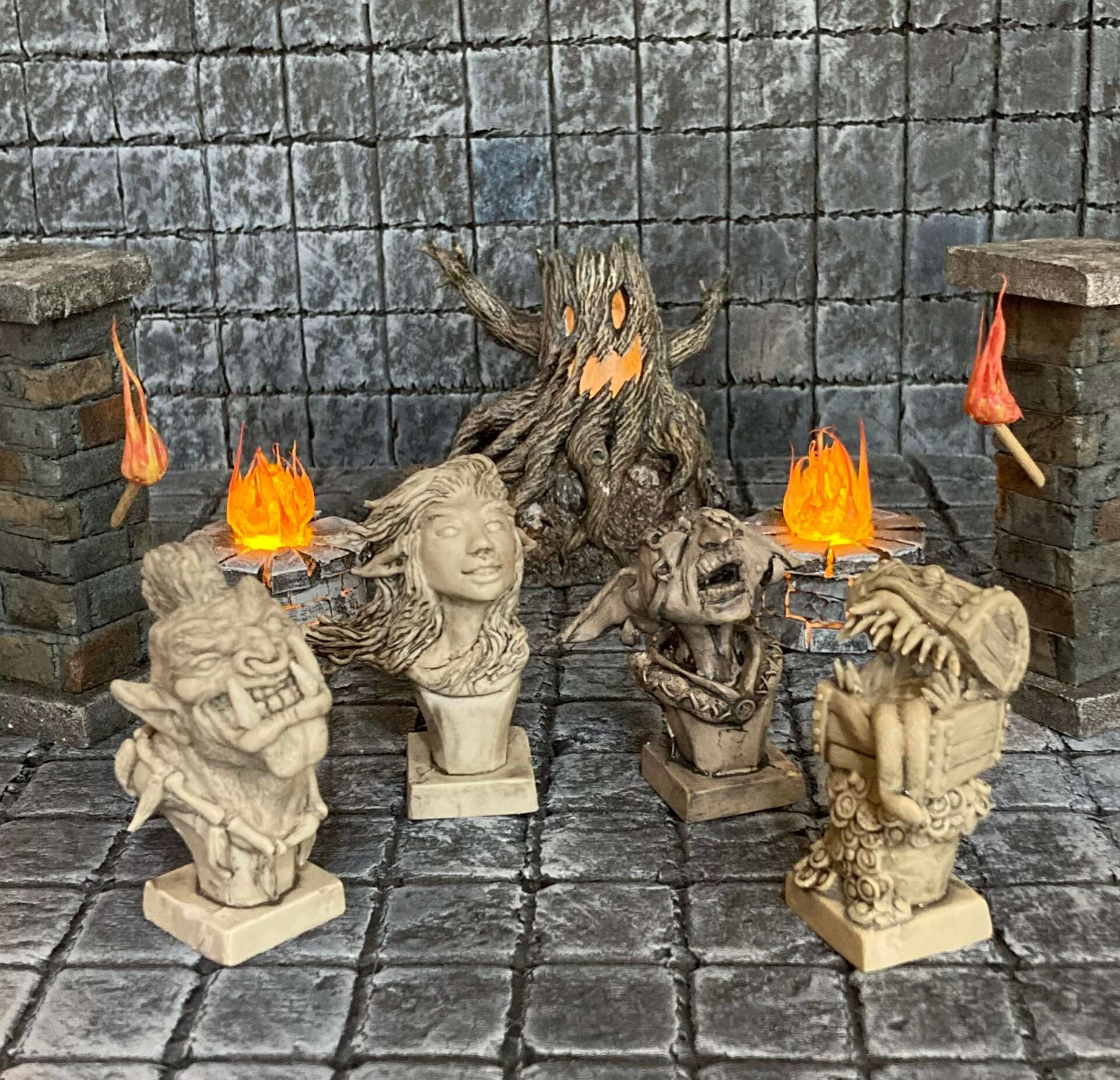
Awesome – so before we get into the rest of our questions, can you briefly introduce yourself to our readers.
Years ago, Russ was an archaeologist with a background in art. He had created pieces for tv, journals, and museums. Dan has a Bachelor of Fine Arts degree from Indiana University, where he majored in Sculture both tactile and digital. There he was fortunate to study with professors who did not dismiss his penchent for fantasy and scifi art as nonsensical and not worthy of being called art. He was allowed to pursue his passion without that kind of prejudice that, unfortunately is quite common in the world of art.
In 2013, The Gaming Geeks was formed when we approached a small start-up company called Roll20 (!) that had a juried call for artists to create for their marketplace. It was an idea they did not know would succeed, but we threw our hat into the ring and created mapping pieces that players could use and create their own world maps. It was called Old World Style, after the lithgraph style prints of old maps and texts. For several years, we continued to create pieces in that style, now totalling in the 10’s of thousands of individually drawn pieces that can be used with about any mapping program. We expanded into VTT digital full color maps, inventory sets, and other digital artwork. Virual Tabletop (VTT) is fantastic, but we are tabletoppers at heart, and soon we longed to start creating material art again. Something you can touch and pick up. Chester, the chest monster container was one of our first creations, followed by several eggs that also open up as containers. We found our biggest groove in creating the microbust series, where we could be a lot more expressive with our sculpts, and be able to share them more with people at festivals and conventions.
We’d love to hear a story of resilience from your journey.
As many artists know, most do not start off a business rich…so we have to be creative, and patient. Patience is perhaps the most difficult thing to master. When we shifted slightly from just creating digital artwork to also creating material items, we did not have the funding to go out and buy every tool, every machine, or anything we wanted right off the go. As we developed our skills sculpting, we had to learn how to work around not having pieces of equipment. How we designed pieces had to take first and foremost thought. And, as we progressed, what worked before, would not work with newer and more complicated ideas; so, we had to re-learn. With relearning comes frustration, and with frustration, comes the desire to quit at times. But we perservered, We were patient.
We had to learn that not all materials were not good for all applications. We also learned along the way that what seemed like total failures, we noted what happened and were able to use those “failures,” or the failing techinques, towards our advantage in later projects. And what we considered our failures, when presented to our customers, were absolute hits. Our patience has paid off. With each small success, we were able to add another piece of equipment, which of course mean more learning, more frustration, and more desires to quit once in a while. Self doubt in the beginning has been replaced now with experience, and resilience.
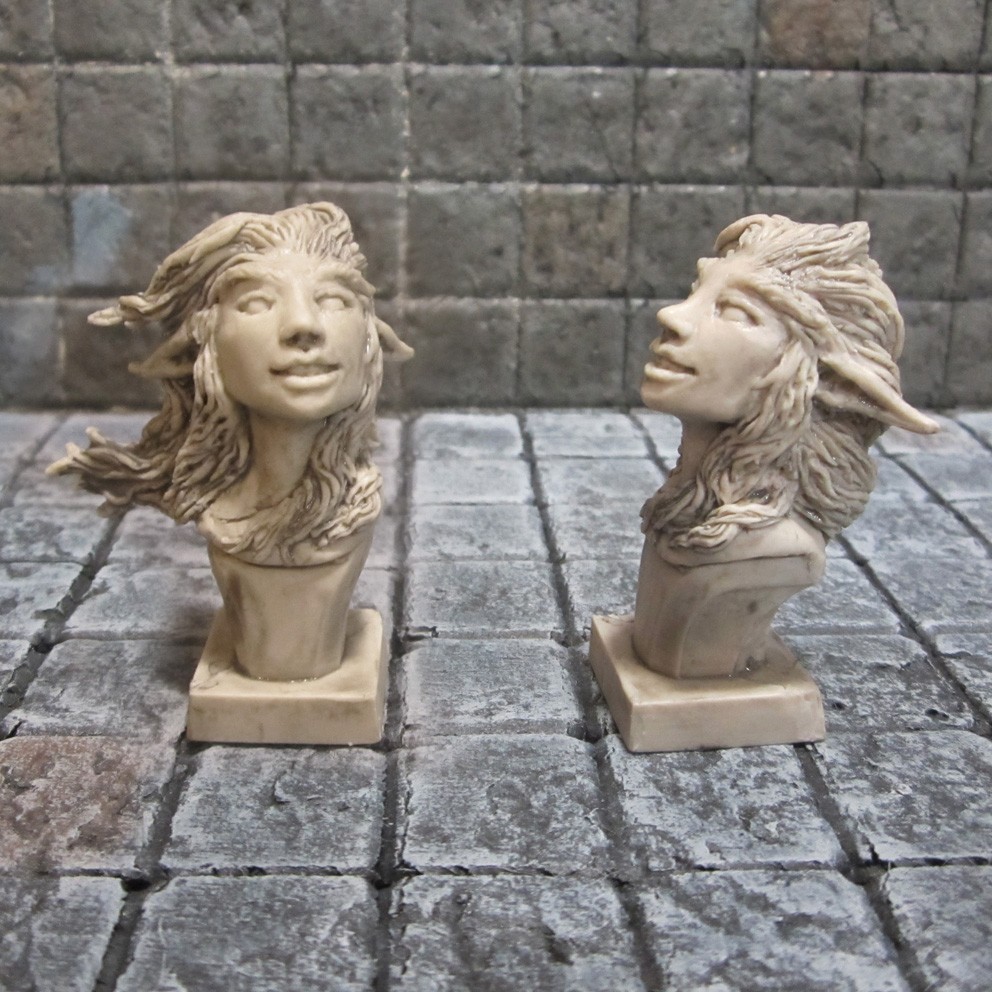
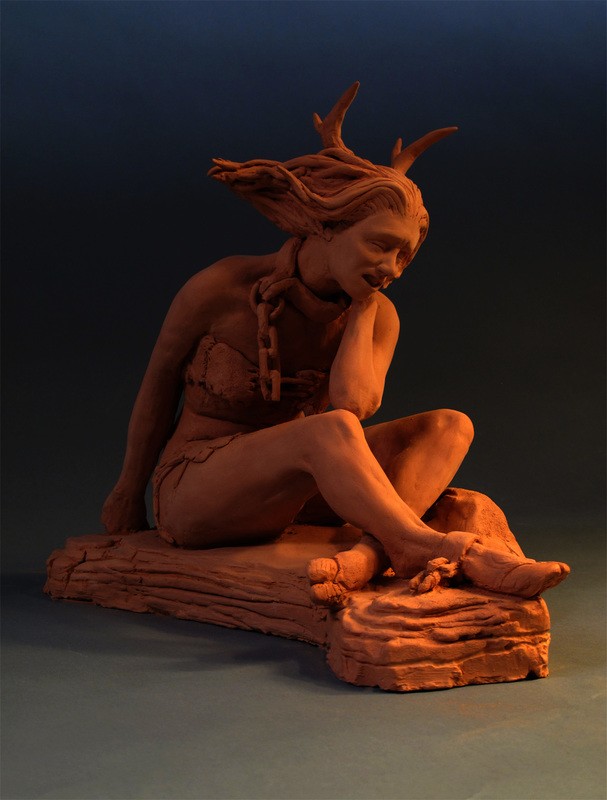

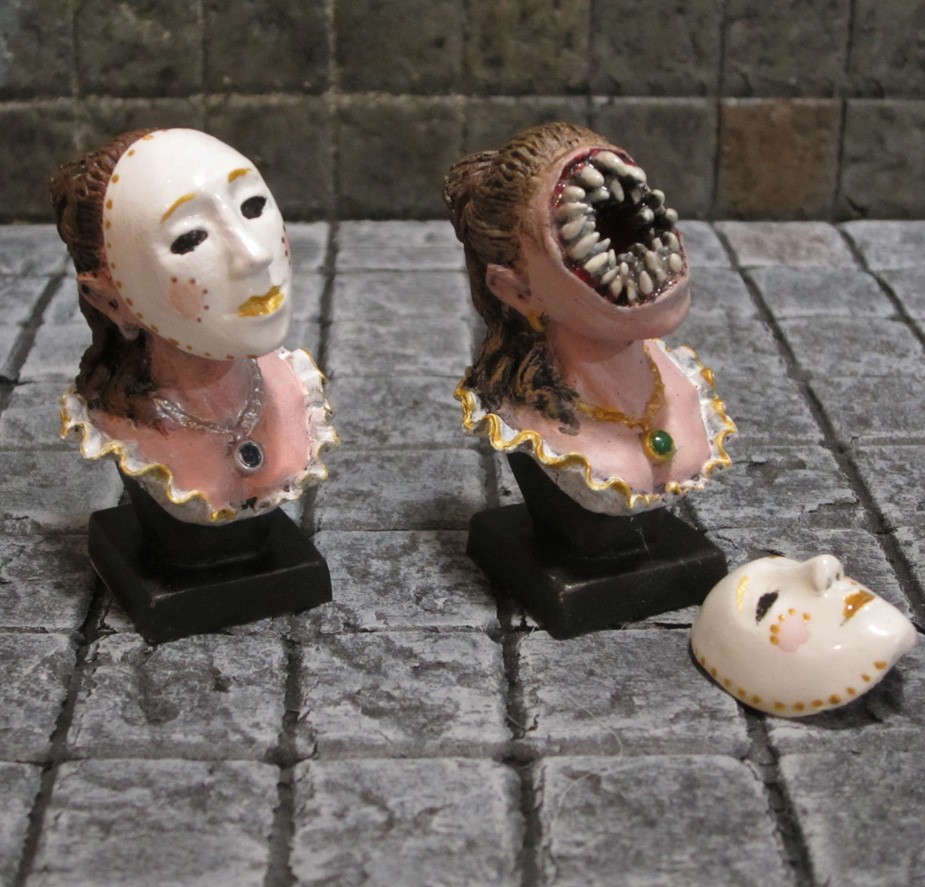
Learning and unlearning are both critical parts of growth – can you share a story of a time when you had to unlearn a lesson?
Oil clay is a beautiful thing, just not for everything.
We originally worked in oil clays without sulfur. We thought, “This will be great! We can make the originals, make molds, then reuse the clay…it will save us so much money!”
Funny thing about oil based clays, when introduced to heat, no matter how minute, can shift form. In earlier works, we had to continually sculpt, then place the sculpt in a freezer, then bring it back out for five minutes until we noticed accidental shifts in the clay, then refreeze and so on. And sometimes, when creating a mold, the heat from the mold setting can shift the clay as well, thereby warping the piece, and the subsquent pieces from that mold. On top of that, oil clay original sculpts can also be destroyed when removed from the mold…basically, thinking we would save so much time and money actually cost us about three times as much in the beginning in both time and resources. What we thought would help us grow our business, taught us that not everything can be used for everything.
Contact Info:
- Website: https://thegaminggeeks.net
- Instagram: https://www.instagram.com/the_gaminggeeks/
- Facebook: https://www.facebook.com/gaminggeeksindiana
- Twitter: https://twitter.com/russ_hapke
- Youtube: https://www.youtube.com/channel/UCspCrYpHSccIcZrCmz-gXXw


